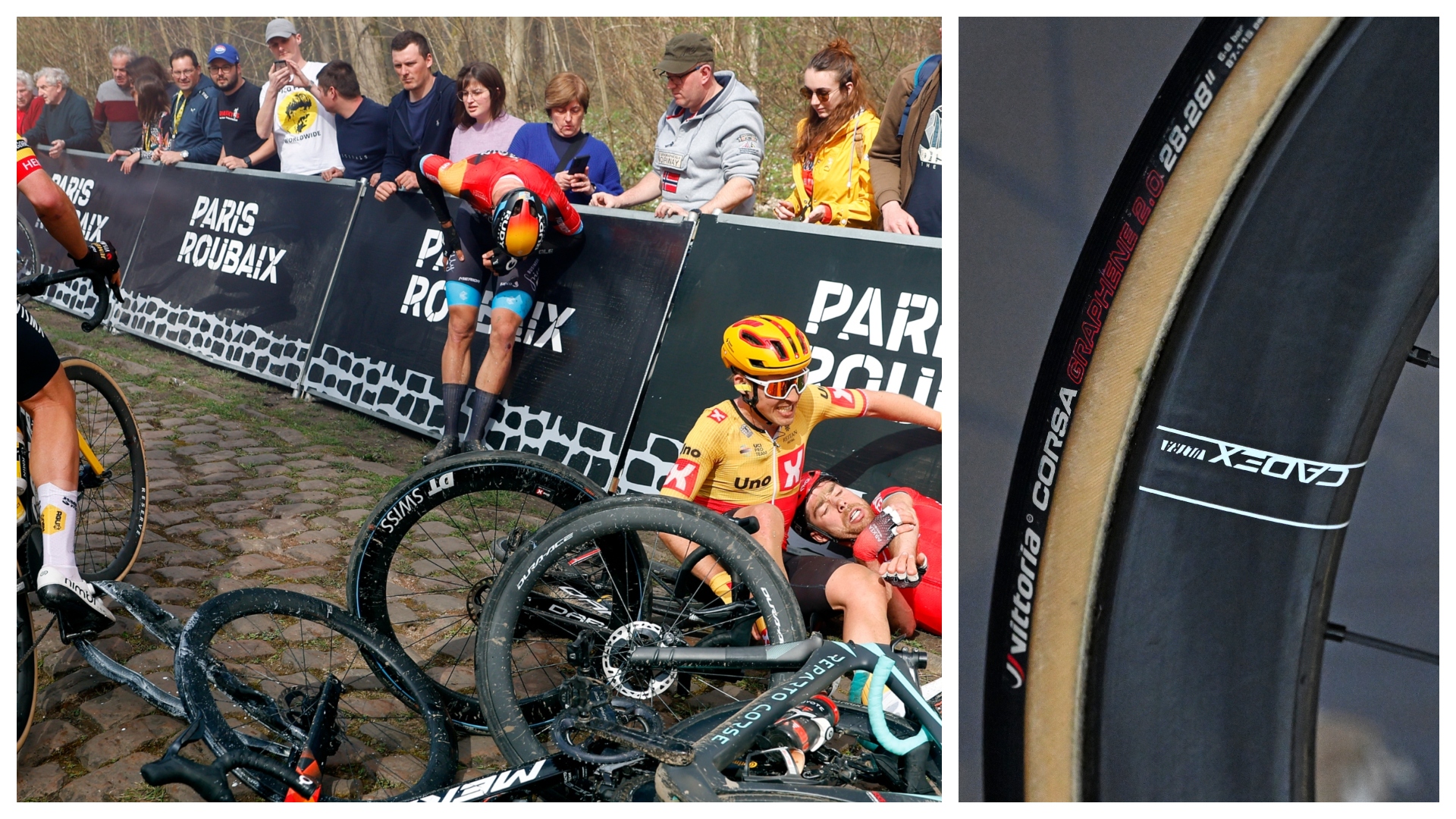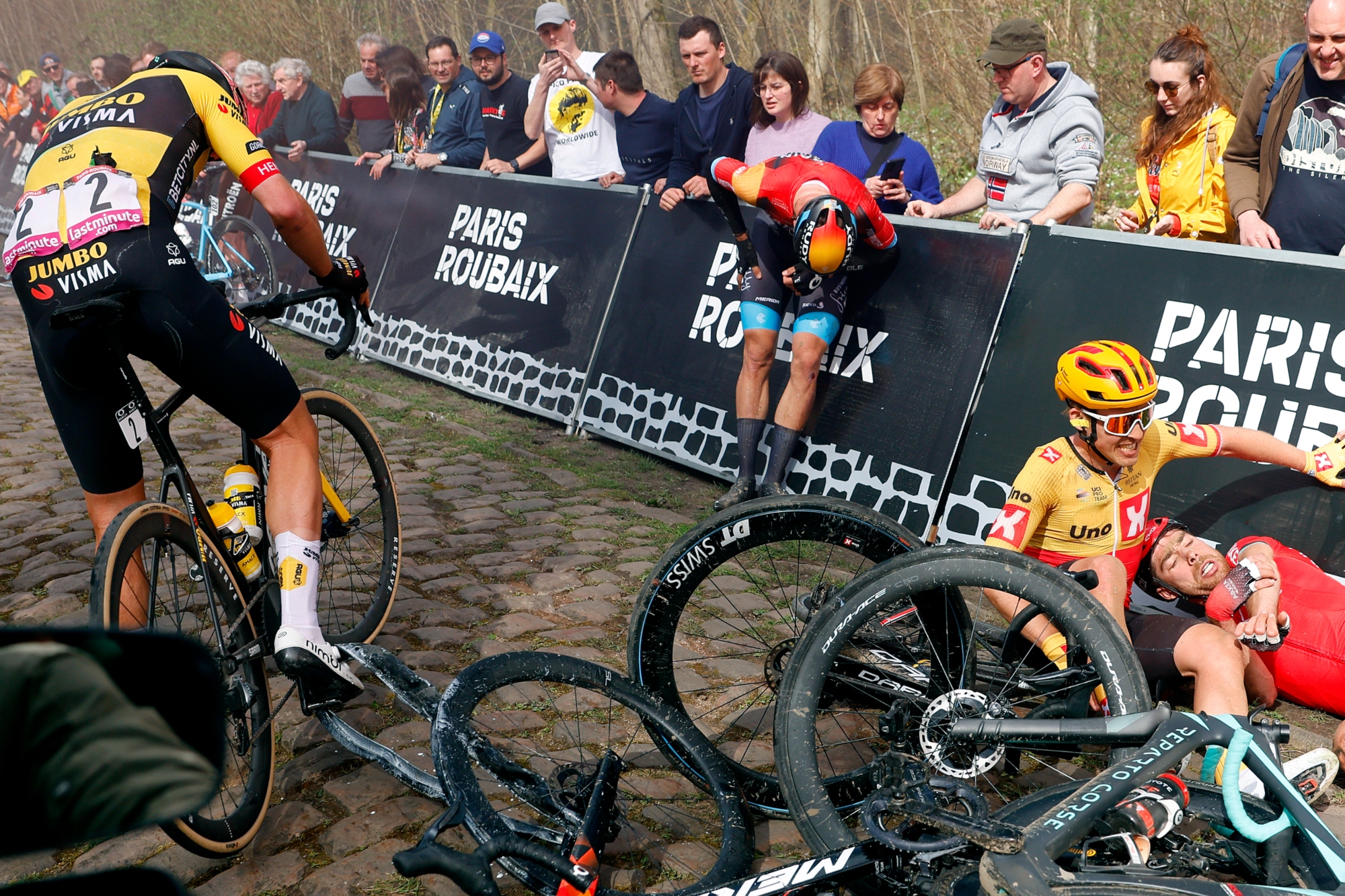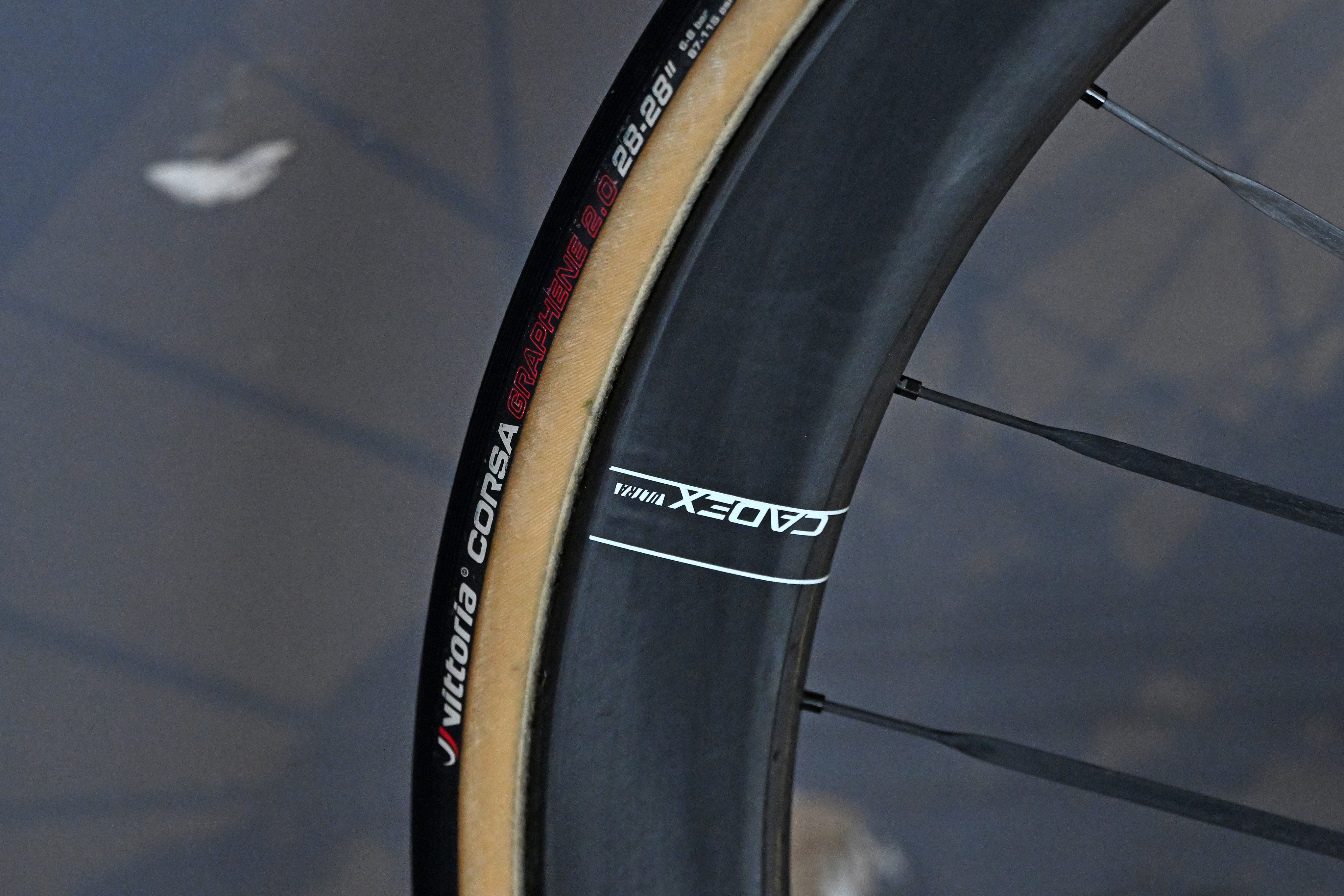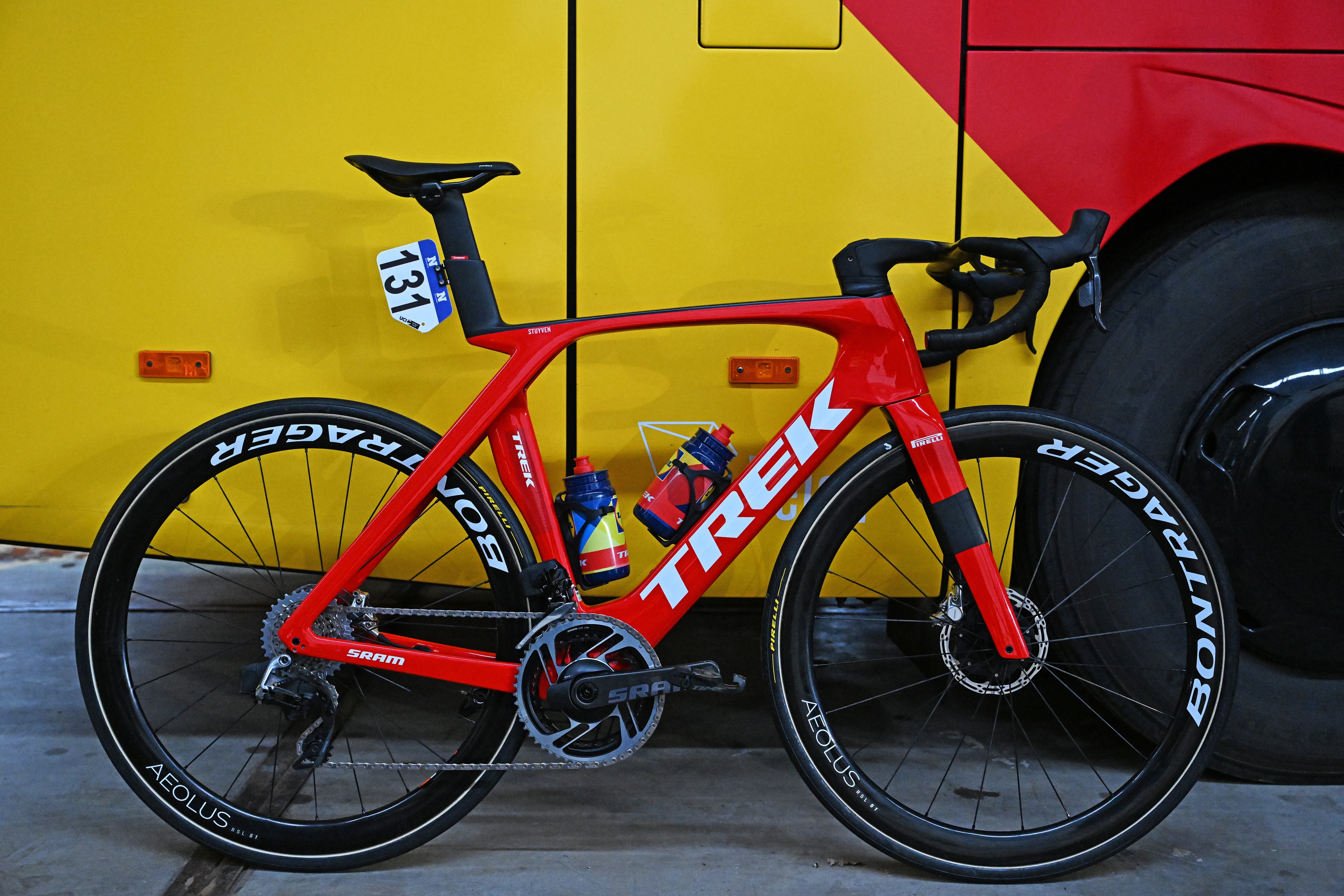For the 'safety of the riders' - WorldTour mechanics are still choosing tubular over tubeless tyres
Inner tubes, tubular tyres and tubeless setups have all been on show, so why are the teams all running different setups?


The opening weekend in Belgium marks the first opportunity for professional teams to begin tinkering with cobbled classic tech for monuments later in the season, and this year has been no exception.
While the usual suspects of huge chainrings, custom handlebars, and increasingly crazy aero helmets were all present, one trend - or lack thereof - stood out to me. The vast array of tyre setups in the peloton, and more importantly the return of good old-fashioned tubular.
Big names, including Lidl-Trek are still using this rather archaic wheel setup for the classics, with mechanics claiming 'rider safety' is playing a part in tyre choice.

With modern-day bikes providing more tyre clearance, most teams in the WorldTour have made the move to tubeless tyres. Wider rubber, and therefore lower tyre pressures has led to more reliable tubeless setups. Couple that with the lower rolling resistance, and it seems an obvious choice - but not for Trek Sagefredo and Liv Jayco AlUla.
"For me is more for the protection and safety of the rider," explains Valentin Omont, Head Mechanic at Liv Jayco AlUla , "because, okay, the tubeless with the liner inside protects the rim, but the tubular with the glue on the rim can be more safe, and if you have a puncture, the rider can keep riding the bike."

Fred Wright experienced a tubeless failure in the forest of Arenberg in last year's Paris-Roubaix
When a tubeless setup does fail in a race scenario, it's often catastrophic. No inner tube and more commonly hookless technology can leave the tyre liable to completely come off the rim, which is dangerous, and can make wheel changes problematic.

The Women's WorldTour squad was riding a mix of 28 and 30mm tubular tyres on 50mm rear and 42mm Cadex wheels, based on riders preference.
The latest race content, interviews, features, reviews and expert buying guides, direct to your inbox!
Over at Lidl-Trek, I was told the decision to run tubeless was more down to rider preference.
"It’s a rider’s choice," one mechanic told me, "and also the feedback from the mechanics. We had a wide range from Pirelli that we can choose from."
The Lidl-Trek riders were using 28mm Pirelli P-Zero Velo Tubs front and rear, with 5.7 bar / 82 PSI of pressure, a much harder setup than rivals on tubeless setups.

Visma Leas-a-bike on the other hand, were all running the same modern-day setup. Vittoria Corsa Pro tubeless tyres, 30mm in width, set up with Vitorria's Air-Liner tyre inserts and some on their new Reserve wheels.
This was a common theme among teams using tubeless setups, with Ineos-Grenadiers, and Lotto Dstny, were among those using tyre inserts. In fact, when I asked Jeanick Verstraete, a mechanic at Lotto Dstny whether or not they were running inserts, he answered with an assured "yes, yes, yes" as if it was a no-brainer to use the technology from a safety standpoint.

Wheels have seen a shift towards hookless technology in recent years, and though it does allow wheel manufacturers to save weight on the rims, it does make it easier for a tyre to come completely away from the rim.
For the cost of "1-1.1 watts" according to Lotto Dstny one mechanic, riding with an insert gives the tyre a little more support and can help to keep a tyre seated even when pressure is lost from a puncture.

Back in the Tour Down Under, we spotted both Bora-Hansgrohe and Soudal Quick-step still riding inner tubes, and the trend continues, even for the classics. Kevin Grove, mechanic at Bora Hansgrohe explained that the Turbo Cotton Hell of the North "is faster" than current tubeless setups from Specialized when paired with latex inner tubes, but refused to confirm whether new tubeless setups were on the wayy.
The obvious worry here is punctures. Using inner tubes leaves riders more susceptible to pinch flats, but Grove told me " the tubes have held up okay [in testing], knock on wood..."
Bora riders were also risking slightly lower pressures on the cobbles.
"Tyre pressures are mid 4s, low 5s, but it depends on everybody - Jordi [Mewes] for example is low 5s, but most of the guys are mid 4s" - that's around 65 PSI.

Joe is Cycling Weekly's former tech writer. He's always had a love for bikes, since first riding a two wheeled steed before the age of four. Years down the line, Joe began racing at 16, and enjoyed great experiences internationally, racing in Italy, Spain and Belgium to name a few locations. Always interested in tech, Joe even piloted his Frankenstein hill climb bike to a Junior National Title in 2018. After taking a step back from elite level racing in April 2022, Joe joined our team as a freelancer, before becoming Tech Writer in May 2023.